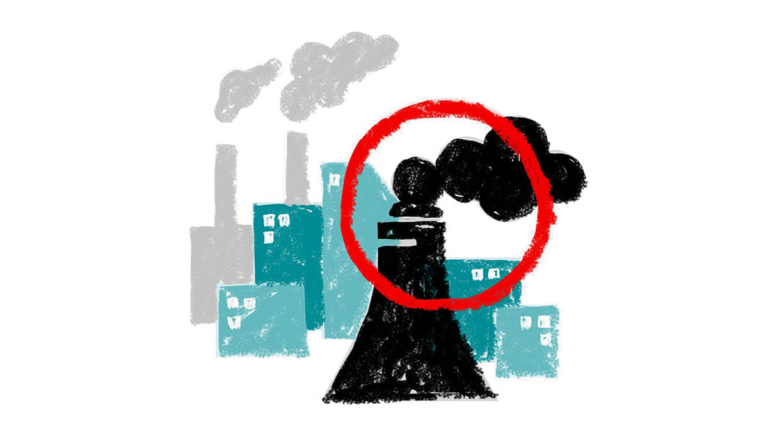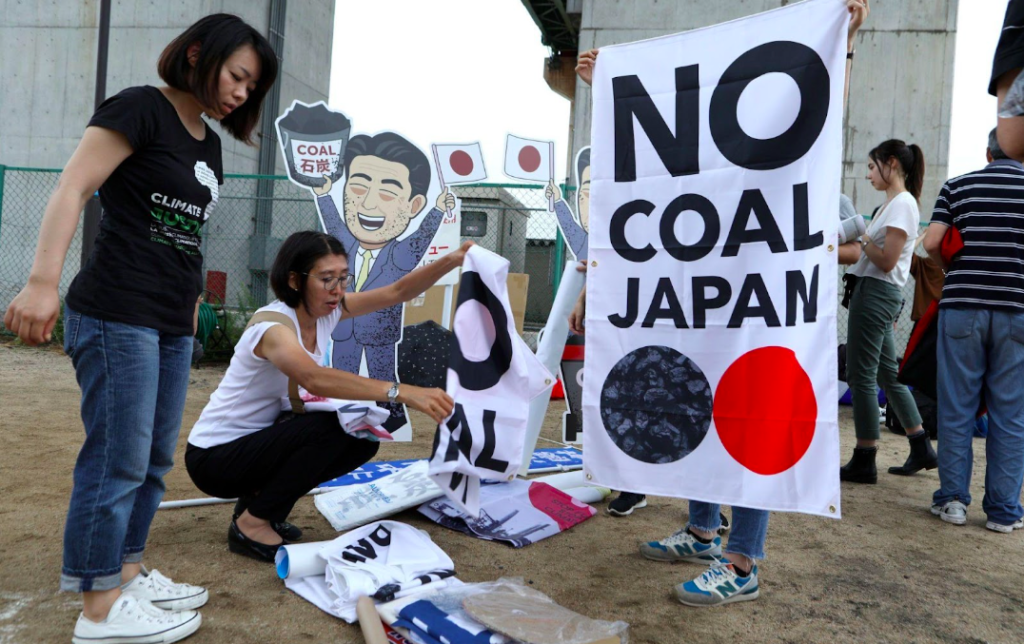Casebook Info
For half a decade, Japanese citizens of Kobe have litigated in an attempt to secure more ambitious climate action from their government and reduce the prevalence of coal-fired power. But in 2023, ruling on its first-ever climate change case, Japan’s Supreme Court held that greenhouse gas emissions are an unjusticiable matter of public policy and cannot be invoked in the context of fundamental rights.
- Year Filed 2018
- Year of Most Recent Ruling 2023
- Year of Final Ruling 2023
- Jurisdiction Japan
- Court Name Supreme Court
- Primary Focus Mitigation
- Ruling On Merits
- Plaintiff(s) 12 Citizens of Kobe, Japan
- Respondent(s) The Government of Japan
- Outcome N/A
- Organizational leader of the litigation Citizens’ Committee on the Kobe Coal-Fired Power Plant
- Link to the decision/ruling
Background
The Great East Japan Earthquake of 2011 led the country to temporarily shut down all nuclear power plants, which led to an increased reliance on coal. In 2013, the Japanese government substantially relaxed assessment standards for building new coal-fired plants, and two new plants were planned in the city of Kobe. In an effort to stall the construction of these plants, residents of Kobe pointed to a streak of recently broken temperature records, extreme flooding and torrential rains, air pollution, and the dangers of global climate change. Many residents, including the mayor, expected the Japanese government to take more ambitious climate action and invest in renewable energy, rather than turning toward fossil fuels.
When their opposition was ignored, 12 citizens filed an administrative action against the state in November 2018. In their complaint, the plaintiffs asked the Osaka District Court to revoke the coal-fired plants’ Notice of Finalization, which had been issued by the Ministry for Economy, Trade, and Industry. They argued that the Notice of Finalization was based on a flawed and insufficient environmental impact assessment. According to the plaintiffs, the plants in question would emit roughly 7 million tons of CO2 annually – over half (60%) of the city’s already-existing indirect emissions. The plaintiffs also sought a declaratory judgment finding that the Japanese government had unlawfully failed to establish CO2 emissions regulations consistent with the Paris Agreement. They also disputed the permissibility of the Japanese government’s environmental and administrative decisions. They pointed to the fact that environmental impact assessment failed to consider the emissions of two key pollutants, nitrous oxides and PM2.5 – which can cause or worsen acid rain, lung cancer, and other respiratory and cardiovascular diseases.
Notably, this was not the only lawsuit brought by Kobe residents seeking to stop the construction of the coal-fired plants. In Citizens’ Committee on the Kobe Coal-Fired Power Plant v. Kobe Steel Ltd. (2018) a group of 31 families brought a civil case against the power company itself. (For more information, see the case study here.
The Osaka District Court’s Decision –
The plaintiffs’ efforts in the Osaka District Court were unavailing. In March of 2021, the court rejected their claim based on two justifications. First, the court held that the plaintiffs lacked standing, reasoning that the potential damage to health posed by global warming was a matter of general public interest rather than individual interest, as standing requires. Second, the court held that the government’s decision to issue the plants’ Notice of Finalization had neither deviated from nor abused the government’s discretionary power, despite its failure to consider the emission of certain pollutants. For these reasons, the Court declined to revoke the Kobe Coal plants’ permits.
Less than one month later, the plaintiffs appealed the District Court’s ruling to the Osaka High Court. They reiterated their original claims in addition to advancing a new argument – that greenhouse gas emissions can violate the human rights of individuals because climate change results in damage to individuals’ lives, health, and property. The plaintiffs also alleged that the District Court’s denial of their standing to sue constituted a violation of their right to access the courts.
The Osaka High Court’s Decision –
With only one minor deviation, the High Court in April of 2022 upheld the District Court’s judgments. Regarding standing, the court recognized appellants’ standing in relation to air pollution but not in relation to climate change and carbon dioxide emissions. Reasoning that there must be a legally protected individual interest at issue for a plaintiff to have standing under Japan’s administrative laws, the court held that the interest to not have one’s health damaged by global climate change remained a matter of general public interest that could not be claimed by individuals. The court noted that this interest should be pursued through policymaking and legislation, not through the courts.
Regarding the Kobe coal-fired plants’ permits, the court held that the Ministry had acted within its substantial discretion and that the Notice was therefore legal. The determined that it could not make a judgement on the carbon dioxide emissions, since this was a question for policymakers.
The only distinction between the judgments of the District and High Court related to the matter of standing. Though both decisions ultimately denied the appellants’ standing to sue, the High Court acknowledged that while the interest of protecting one’s health from climate change was not currently a legitimate and protected individual interest, it could potentially become one in the future.
In May of 2022 the plaintiffs once again appealed the judgment, this time to Japan’s Supreme Court – marking the Supreme Court’s first-ever encounter with a climate change case.
The Supreme Court’s 2023 Decision –
The Supreme Court issued a final ruling on the case in March of 2023, rejecting the plaintiffs’ request for a final appeal and upholding the Osaka High Court’s judgment. The Court did not provide any specific or substantive reasons for their conclusion that there were no grounds for a final appeal.
- 163 number of operating coal-fired power plants in Japan (as of May 2022)
- 8 additional coal-fired plants planned or under construction in Japan
- 85% of Japan’s total CO2 emissions derive from the energy sector
- 5th Japan’s place amongst the world’s largest emitters of CO2
Strategies
Utilizing a variety of legal arguments to increase the likelihood that one such argument will succeed in front of the court

The plaintiffs’ emphasis on administrative law – rather than civil law – distinguishes this case from most other climate-related suits. Notably, this litigation was initiated in parallel with another civil case against the Kobe power plant itself – Citizens’ Committee on the Kobe Coal-Fired Power Plant v. Kobe Steel Ltd. (2018). In this way, the residents of Kobe used a multi-pronged approach to test climate claims in different bodies of Japanese law. Although this administrative case was dismissed, its sister case remains pending before the appellate court. This leaves some hope that the residents of Kobe will still prevail.
Challenging a fossil fuel project

Rather than challenging Japan’s limited action on climate change more broadly, the plaintiffs here chose to target the government’s specific choice to approve the Kobe power plants’ construction and expansion. Although the plaintiffs’ strategy can be seen as challenging their government’s reliance on fossil fuels more broadly, their legal claims were confined to a narrow, localized goal. Such an approach can make claims about global climate change look more familiar to judges, who traditionally deal with localized disputes. Claims about climate harms from broader government policies would likely have been dismissed, given that the courts found the plaintiff’s potential injuries insufficiently specific.
Takeaways
Cases based on administrative law may encounter more substantial judicial resistance and sometimes fatal procedural hurdles. Here, reliance on administrative law required that the plaintiffs target a particularized administrative decision rather than focusing on rights-violating actions or omissions more generally. Likewise, the plaintiffs struggled to meet the courts’ administrative individual interest requirement. The Japanese Supreme Court’s non-recognition of standing is – for now – likely to block further attempts to address greenhouse gas emissions through administrative litigation. And if plaintiffs succeed in proving standing, the courts in Japan (and elsewhere) are likely to continue giving the government wide administrative discretion.
Social perceptions still matter. Japan’s courts echoed two very common governmental refrains in contemporary climate litigation – (i) that climate change is a matter for legislation and policy, not the judiciary, and (ii) that climate change presents too speculative, global, or general a threat to constitute an adequate basis for vindicating personal fundamental rights. The High Court’s acknowledgement that these rights may become protected in the context of climate change shows that it is considering social and political perceptions. Thus, global efforts to shed light on the urgency and gravity of climate change remain a valuable tool in the climate litigation movement. The courts’ opinions also demonstrate that although rights-based climate arguments have made considerable strides, many of the global powers remain reluctant to acknowledge the human rights impacts of climate change and unwilling to apply traditional legal theories to the relatively contemporary issue.
Impacts
For now, the Kobe coal-fired plants – and hundreds of others across Japan – will continue to emit large volumes of CO2 and other health- and climate-impacting pollutants. Though the outcome of this case was discouraging, the efforts of Citizens’ Committee shed light on the road ahead, including the most (and least) promising pathways to clean energy.

